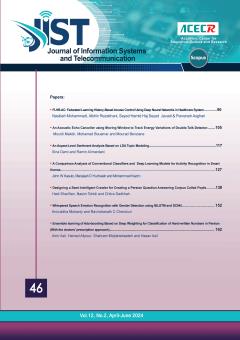Clutter usually has negative influence on the detection performance of radars. So, the recognition of clutters is crucial to detect targets and the role of clutters in detection cannot be ignored. The design of radar detectors and clutter classifiers are really complica
More
Clutter usually has negative influence on the detection performance of radars. So, the recognition of clutters is crucial to detect targets and the role of clutters in detection cannot be ignored. The design of radar detectors and clutter classifiers are really complicated issues. Therefore, in this paper aims to classify radar clutters. The novel proposed MLP-based classifier for separating radar clutters is introduced. This classifier is designed with different hidden layers and five training algorithms. These training algorithms consist of Levenberg-Marquardt, conjugate gradient, resilient back-propagation, BFGS and one step secant algorithms. Statistical distributions are established models which widely used in the performance calculations of radar clutters. Hence In this research, Rayleigh, Log normal, Weibull and K-distribution clutters are utilized as input data. Then Burg’s reflection coefficients, skewness and kurtosis are three features which applied to extract the best characteristics of input data. In the next step, the proposed classifier is tested in different conditions and the results represent that the proposed MLP-based classifier is very successful and can distinguish clutters with high accuracy. Comparing the results of proposed technique and RBF-based classifier show that proposed method is more efficient. The results of simulations prove that the validity of MLP-based method.
Manuscript profile


